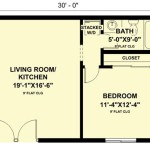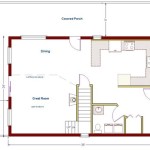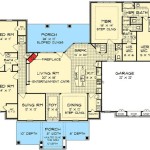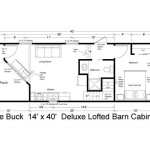Floor Plan of a Bedroom
The floor plan of a bedroom is a crucial aspect of designing a comfortable, functional, and aesthetically pleasing space. It serves as a blueprint that guides the placement of furniture, fixtures, and décor, ensuring a cohesive and harmonious environment.
When creating a bedroom floor plan, several key considerations come into play:
- Room Size and Shape: The dimensions and shape of the room influence the overall layout. A square or rectangular room offers more flexibility, while irregular shapes require creative solutions.
- Bed Placement: The bed is the focal point of any bedroom, and its placement dictates the traffic flow and the placement of other furniture. Consider the size of the bed, the direction of the headboard, and the accessibility from multiple sides.
- Furniture Arrangement: In addition to the bed, the bedroom typically includes dressers, nightstands, a desk, and a vanity. The floor plan should allocate sufficient space for each piece of furniture, ensuring easy movement and avoiding overcrowding.
- Storage: Ample storage is essential for keeping a bedroom organized. Incorporate built-in closets, drawers, and shelves into the floor plan to maximize storage space and maintain a clutter-free environment.
- Light and Ventilation: Natural light and adequate ventilation are crucial for a comfortable and healthy bedroom. The floor plan should incorporate windows and doors to provide ample light and air circulation.
- Privacy and Soundproofing: For bedrooms that share walls, consider soundproofing materials or strategic furniture placement to minimize noise disturbances.
The design of the bedroom floor plan should also reflect the personal preferences and lifestyle of the occupant. Some prefer a minimalist layout with open spaces, while others may opt for a more traditional approach with defined areas for sleeping, dressing, and relaxing.
To create an optimal bedroom floor plan, follow these steps:
- Measure the room accurately and sketch out the floor plan to scale.
- Determine the ideal placement of the bed, considering the desired headboard direction and accessibility.
- Plan the furniture arrangement around the bed, allowing ample space for movement and access to drawers and doors.
- Incorporate storage solutions, such as built-in closets, drawers, or shelves, to maximize storage capacity.
- Identify the desired lighting scheme, including natural light sources and artificial lighting fixtures.
- Consider soundproofing measures or strategic furniture placement to minimize noise disturbances.
- Refine the floor plan by adjusting furniture sizes, spacing, and décor to create a balanced and harmonious design.
By carefully planning the floor plan of a bedroom, you can create a comfortable, functional, and inviting space that meets the specific needs and preferences of the occupant. Remember to consider all the key factors discussed above to design a bedroom that is both practical and aesthetically pleasing.

Bedroom Floor Plans

Bedroom Floor Plans Types Examples Considerations Cedreo

9 Tips To Consider When Planning Your Bedroom Layout

Free Bedroom Floor Plan Template

Bedroom With Toilet Floor Plan Template

Bedroom Floor Plans Types Examples Considerations Cedreo

Pin On House Plans
8 Designer Approved Bedroom Layouts That Never Fail

Master Bedroom Floor Plans An Expert Architect S Vision

Master Bedroom Floor Plans An Expert Architect S Vision








